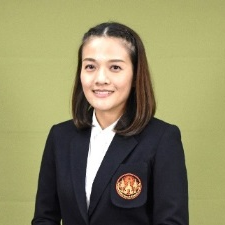Intelligent Innovation in Engineering, Applied Sciences and Technology
A special issue of Applied Sciences (ISSN 2076-3417).
Deadline for manuscript submissions: closed (31 August 2021) | Viewed by 14956
Special Issue Editors
2. Industrial Engineering Department, Faculty of Engineering, King Mongkut’s Institute of Technology Ladkrabang, Bangkok, Thailand
Interests: industrial engineering; design of experiment; optimization; mechanical engineering; thermofluid system; computational fluid dynamics; combustion; plastic materials; plastics processing; plastics injection molding and mold design; manufacturing engineering; CAD/CAM/CAE
Interests: nanotechnology; carbon nanomaterials; thin film process; surface science; electron microscopy; nanoelectronics; chemical and electrochemical sensors; energy storage devices; energy-harvesting devices
Interests: medicinal chemistry; bioorganic chemistry; computational chemistry; pharmaceutical science; pharmaceutical engineering; biomedical engineering
Special Issue Information
Dear Colleagues,
The development of new technology in engineering and science is critically important for increasing productivity, driving innovation, and improving the overall quality of modern life. Researcher scientists and engineers aim to achieve this though the development of new theories and applications, and it is vital that this work be published internationally to facilitate collaborations and spark further innovation. This Special Issue will collect the most innovative and exciting contributions to the 7th International Conference on Engineering, Applied Sciences, and Technology (ICEAST2021), hosted by the College of Nanotechnology and the Faculty of Engineering, King Mongkut’s Institute of Technology Ladkrabang, one of the leaders in research and innovation in applied science and engineering in Thailand. In addition, anyone is welcome to contribute the research to this Special Issue.
This Special Issue will publish the latest engineering and applied sciences research trends, including applications, advanced technologies, and processes. It covers several fields such as the following:
- Industrial engineering and manufacturing;
- Mechanical, mechatronics, and civil engineering;
- Food, chemical, and agricultural engineering;
- Materials science and engineering, nanotechnology;
- Telecommunications, computer science, instrumentation and control, electrical and electronic engineering;
- Acoustic and music engineering.
- Biomedical Engineering
We shall review and select contributions in the form of original scientific reports, research articles, communications, and review articles for publication in this Special Issue.
Dr. Wipoo Sriseubsai
Dr. Winadda Wongwiriyapan
Dr. Matthew Paul Gleeson
Guest Editors
Manuscript Submission Information
Manuscripts should be submitted online at www.mdpi.com by registering and logging in to this website. Once you are registered, click here to go to the submission form. Manuscripts can be submitted until the deadline. All submissions that pass pre-check are peer-reviewed. Accepted papers will be published continuously in the journal (as soon as accepted) and will be listed together on the special issue website. Research articles, review articles as well as short communications are invited. For planned papers, a title and short abstract (about 250 words) can be sent to the Editorial Office for assessment.
Submitted manuscripts should not have been published previously, nor be under consideration for publication elsewhere (except conference proceedings papers). All manuscripts are thoroughly refereed through a single-blind peer-review process. A guide for authors and other relevant information for submission of manuscripts is available on the Instructions for Authors page. Applied Sciences is an international peer-reviewed open access semimonthly journal published by MDPI.
Please visit the Instructions for Authors page before submitting a manuscript. The Article Processing Charge (APC) for publication in this open access journal is 2400 CHF (Swiss Francs). Submitted papers should be well formatted and use good English. Authors may use MDPI's English editing service prior to publication or during author revisions.
Keywords
- engineering
- nanotechnology
- biomedical
Benefits of Publishing in a Special Issue
- Ease of navigation: Grouping papers by topic helps scholars navigate broad scope journals more efficiently.
- Greater discoverability: Special Issues support the reach and impact of scientific research. Articles in Special Issues are more discoverable and cited more frequently.
- Expansion of research network: Special Issues facilitate connections among authors, fostering scientific collaborations.
- External promotion: Articles in Special Issues are often promoted through the journal's social media, increasing their visibility.
- Reprint: MDPI Books provides the opportunity to republish successful Special Issues in book format, both online and in print.
Further information on MDPI's Special Issue policies can be found here.







